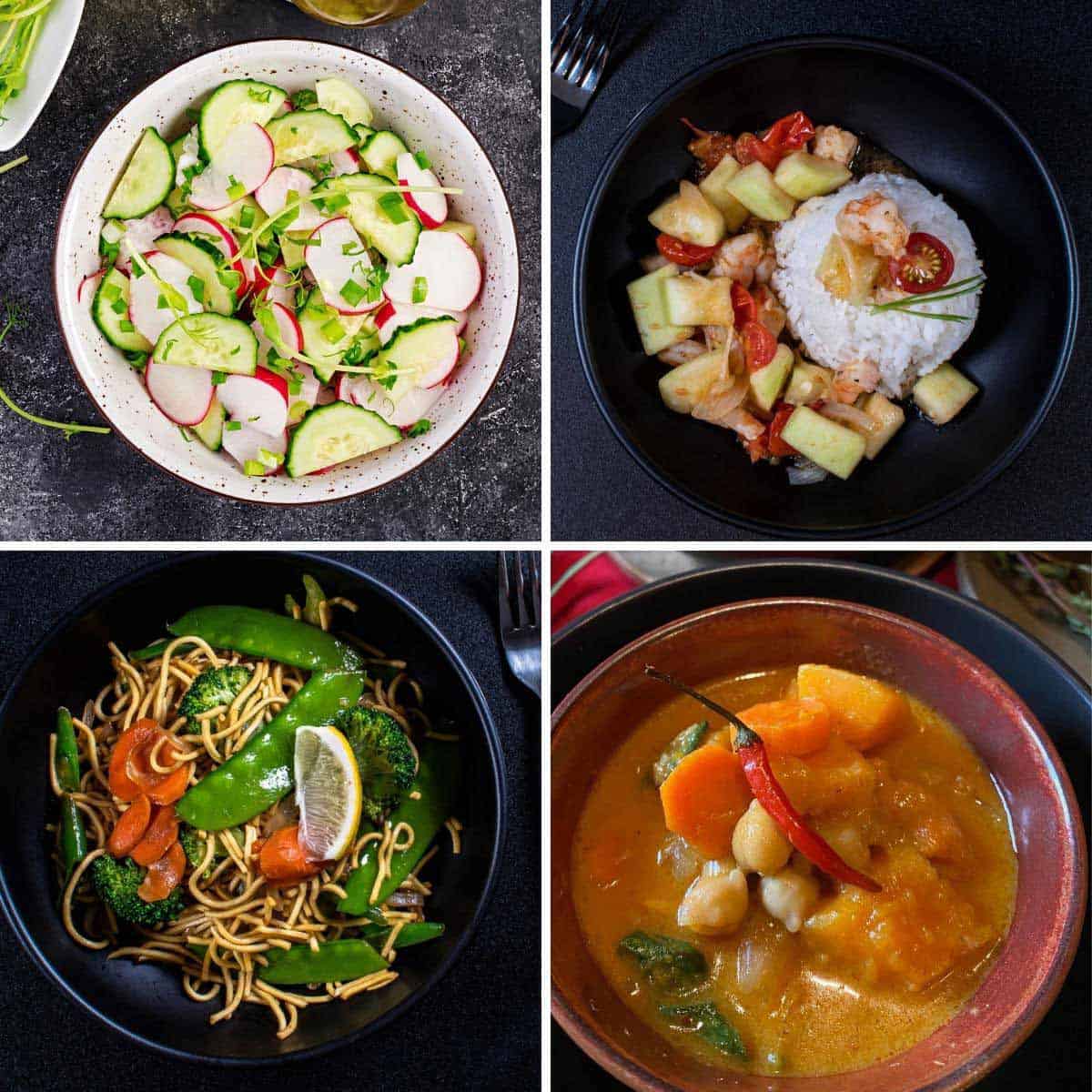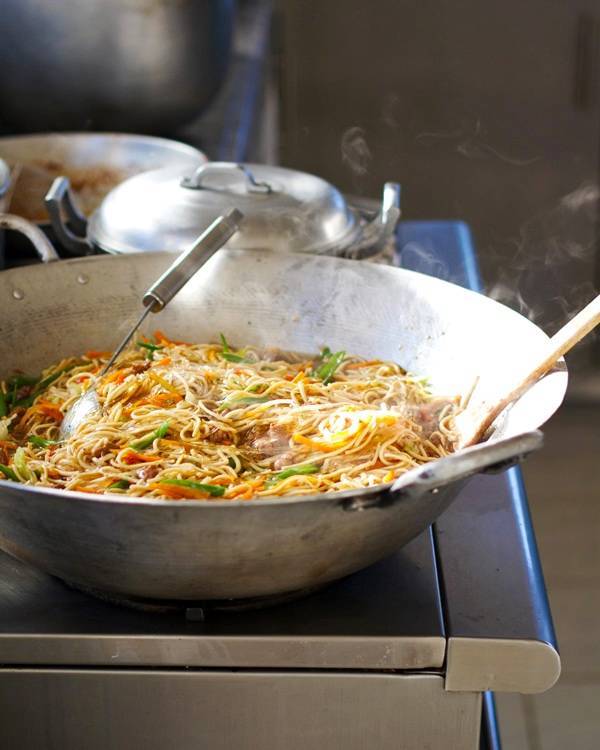Discover the Rich Preference of Filipino Food With These Must-Try Recipes
Filipino cuisine offers a remarkable tapestry of flavors that show the nation's abundant cultural heritage. Each meal tells a tale, from the tasty depth of Adobo to the refreshing tang of Sinigang, inviting cooking lovers to check out a diverse selection of tastes. The cheery appeal of Lechon and the calming heat of Kare-Kare even more enhance this gastronomic journey, while the vibrant Halo-Halo offers a wonderful conclusion to any dish. As we take into consideration the subtleties of these legendary recipes, one have to consider how they not only please the taste but additionally link us to a broader cultural narrative.
Adobo: The Legendary Dish
Adobo has arised as the essential recipe of Filipino cuisine, exciting palates both locally and abroad. This precious dish is identified by its distinct mix of tasty, sour, and a little sweet tastes, achieved via a precise marination procedure. Commonly, adobo is prepared utilizing poultry or pork, although variants exist that incorporate fish and shellfish and vegetables.
The basic active ingredients of adobo include soy sauce, vinegar, garlic, bay leaves, and black pepper, which together develop a rich and fragrant sauce. The food preparation technique generally includes simmering the meat in the marinade, permitting it to absorb the complicated tastes while ending up being tender. This process not just improves the preference yet likewise functions as a natural preservative, making adobo a perfect dish for storage space.
Adobo is typically offered with fit to be tied rice, which complements its robust taste account. Whether taken pleasure in at home or in restaurants, adobo continues to be a staple that personifies the significance of Filipino friendliness, making it a must-try for any individual discovering this vivid food.

Sinigang: A Tangy Pleasure
Another keystone of Filipino food is sinigang, a recipe celebrated for its distinct appetizing taste. This tasty soup is traditionally made with a variety of meats, consisting of pork, beef, shrimp, or fish, and is identified by its sour brew, which generally originates from tamarind, green mango, or calamansi. The equilibrium of level of acidity and umami produces a refreshing contrast that is both calming and stimulating.
Sinigang is usually enriched with a range of fresh veggies such as radish, eggplant, water spinach, and string beans, adding not only to the recipe's flavor account however additionally to its nutritional worth - Filipino food recipes. Each family may have its very own variation, with local variants that reflect neighborhood ingredients and cultural impacts
The preparation of sinigang involves simmering the chosen meat until tender, complied with by the enhancement of the souring agent and vegetables. This technique permits the flavors to combine magnificently, causing a passionate and satisfying meal. Generally offered with fit to be tied rice, sinigang personifies the essence of Filipino hospitality and is a beloved staple, frequently delighted in during household events and special occasions.
Lechon: The Festive Roast
Lechon, commonly related to as the centerpiece of festive Filipino parties, is a delicious roasted pig understood for its crispy skin and tender, savory meat. This legendary meal is deeply rooted in Filipino culture, commonly enhancing tables during birthday celebrations, wedding celebrations, and substantial vacations. The prep work of lechon is an art kind, needing meticulous interest to information, from marinading the pig with a blend of seasonings to making sure an also roast over an open fire or in a specialized stove.
Commonly, the pig is experienced with a mixture of salt, pepper, and neighborhood natural herbs, passing on an abundant flavor that complements its all-natural juiciness. The cooking procedure can take numerous hours, throughout which the skin transforms right into a perfectly crunchy layer, creating a fascinating contrast to the delicious meat under.
Lechon is generally served with a side of liver sauce or vinegar dip, improving its savory account. It is not simply a meal yet a common experience, as family members and good friends gather around to appreciate this sumptuous dish. The aroma of lechon floating with the air is an invitation to indulge, making it a precious symbol of event in Filipino society.
Kare-Kare: Oxtail Stew
Kare-Kare, a rich and hearty oxtail stew, holds a special place in Filipino culinary custom, commemorated for its special taste account and dynamic discussion (Filipino food recipes). This recipe is characterized by its lush peanut over at this website sauce, which is developed by grinding roasted peanuts or using peanut butter, offering it a velvety and nutty significance. Typically, kare-kare functions tender oxtail, although variations might consist of tripe or beef shank, each adding to the stew's depth of flavor
The prep work of kare-kare commonly involves slow-cooking the meat until it ends up being remarkably tender. The enhancement of a selection of vegetables, such as eggplant, string beans, and banana hearts, not only improves the stew's nutritional value but likewise its visual charm. Served with a side of bagoong, or fermented shrimp paste, kare-kare magnificently balances its abundant, tasty notes with a salty kick.
Frequently taken pleasure in throughout unique celebrations and family members celebrations, kare-kare symbolizes the essence of common eating in Filipino society. Its wonderful intricacy and reassuring warmth make it a meal that is not only satisfying to the palate yet additionally stimulates a feeling of nostalgia for numerous Filipinos around the world.

Halo-Halo: A Sugary Food Reward
Halo-halo is typically considered as the perfect Filipino dessert, commemorated for its vibrant mix of appearances and flavors - Filipino food recipes. This wonderful mixture is an ideal representation of the Philippines' abundant cooking heritage, combining various active ingredients that integrate to develop a refreshing and indulgent treat, especially during heat
At its core, halo-halo features crushed ice covered with a range of active ingredients, consisting of sweetened beans, jellies, fruits like bananas and jackfruit, and velvety leche flan. A charitable scoop of ube (purple yam) ice cream crowns the combination, adding a rich, luscious flavor that boosts the dessert. The layering of components not only creates a feast for the eyes however additionally provides a complex interplay of sweet taste and texture in every spoonful.
Commonly served in a glass, halo-halo motivates restaurants to mix the materials prior to savoring. This public element enhances the treat's allure, as everyone's version can be distinctly customized. Whether appreciated as a street food indulgence or a special occasion reward, halo-halo continues to be a beloved symbol of Filipino culture, inviting every person to explore its fascinating and varied tastes.
Verdict
:max_bytes(150000):strip_icc()/265040-Filipino-Beef-Giniling-Pamela-Leyva-1x1-1-6f5eefd058da41bdb609059b253ea76d.jpg)